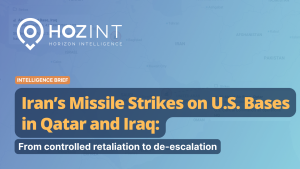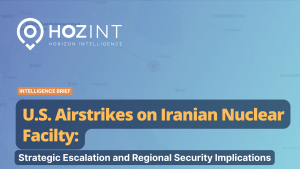In today’s interconnected world, organisations face numerous risks that can impact their reputation, security, and business continuity. To effectively manage these risks, businesses often turn to risk intelligence platforms. These platforms provide valuable insights and enable proactive decision-making by collecting and analysing open-source intelligence (OSINT). However, selecting the right risk intelligence platform requires careful consideration of various factors. In this blog post, we will explore key points to consider when choosing a risk intelligence platform.
Here are some factors to consider when evaluating a risk intelligence platform:
1. Identify your objectives:
Before embarking on the selection process, it is crucial to clearly define your organisation’s objectives. Identify the specific risks you want to monitor, such as physical threats, travel risks, supply chain disruptions, brand reputation, or cyber threats. Understanding your objectives will help you evaluate whether a particular platform aligns with your needs.
2. Data sources and collection methods:
Evaluate the platform’s data sources and collection methods. Does it have access to a wide range of open sources, including social media, news, forums, and blogs? Consider whether the platform utilises advanced data collection techniques, such as web scraping and AI crawling capabilities. Robust data collection capabilities ensure comprehensive coverage and timely detection of potential risks.
3. Regional coverage
When choosing a risk intelligence platform, it is important to consider whether you require global coverage or if your needs are restricted to specific regions. Different organisations have varying geographic footprints and risk exposure. If your business operates on a global scale or has international operations, opting for a platform that provides comprehensive global coverage is crucial. On the other hand, if your organisation’s operations are concentrated in specific regions or countries, you may prioritise a risk intelligence platform that focuses on those areas.
4. Automation and alerting:
Time is of the essence when it comes to managing risks. Seek a platform that offers automation and real-time alerting functionalities. Automated monitoring and alert systems can notify you promptly about emerging risks or critical incidents, enabling swift response and mitigation.
5. Data quality and coverage:
The platform should provide access to reliable and comprehensive data sources that cover various types of risks, such as natural hazards, cyber threats, geopolitical events, regulatory changes, etc. The data should be updated frequently and validated for accuracy and relevance. The platform should also allow you to integrate your own data sources and leverage third-party data providers.
6. User interface and experience:
The effectiveness of a risk intelligence platform lies in its ability to transform vast amounts of data into actionable insights. The platform should have a user-friendly and intuitive interface that allows you to easily navigate, explore, visualise and communicate risk information.
7. Customisation
Every organisation has unique requirements and existing systems. Consider whether the risk intelligence platform offers customisation options to tailor it to your specific needs. Does it cover the types of risk you would like to monitor? Does it monitor areas around your assets?
8. Integrations
Assess its integration capabilities with other tools and systems, such as security incident and event management (SIEM) platforms or Visual Command Center (VCC). Consider whether the risk intelligence platform provides Application Programming Interface (API) to ensure a streamlined workflow to integrate with third-party applications.
9. Collaboration and Sharing:
Collaboration is essential for effective risk management. Evaluate the platform’s collaboration features, such as the ability to share intelligence reports, settings, assets etc. Look for features that facilitate collaboration among different teams and stakeholders, promoting seamless information sharing and decision-making processes.
10. Customer service
The importance of customer service cannot be overstated when selecting a risk intelligence platform. A reliable and responsive customer service team is a valuable asset that ensures a smooth user experience and maximises the platform’s effectiveness. When facing potential risks and threats, timely support and assistance can make a significant difference in effectively addressing and mitigating those risks.
Conclusion:
Choosing the right risk intelligence platform is a critical step towards proactively managing risks and safeguarding your organisation. By considering the points discussed in this article, you can make an informed decision that aligns with your specific needs and objectives. Remember to evaluate the platform’s data sources, analysis capabilities, automation features, collaboration functionalities, customisation options, and integration capabilities. A well-chosen risk intelligence platform will empower your organisation to identify, assess, and mitigate risks effectively, enabling you to stay ahead in an ever-evolving threat landscape.




